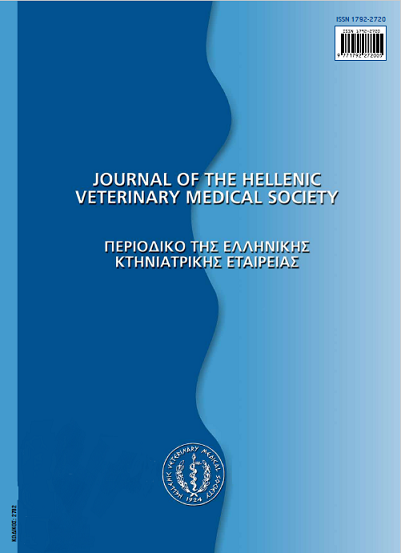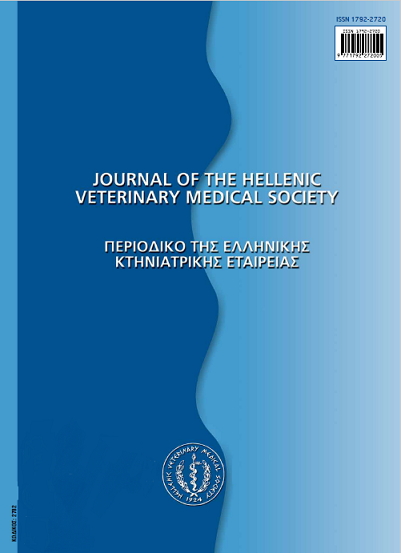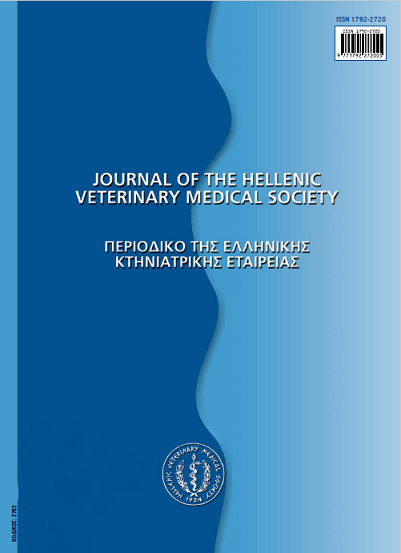Fertility rate of short-term progestagen pretreated ewes in relation to breed: A field study

Abstract
The effect of short-term instead of long-term progestagen treatment on fertility of Karagouniko and Chios ewes, after natural mating or artificial insemination, was investigated. Two experiments were performed during the transition period from anοestrous to the breeding season. In the 1st experiment (natural mating, NM), Karagouniko and Chios ewes were randomly allocated into 3 groups, that were KLM (long-term progestagen treatment; n=35), KSM (short-term progestagen treatment; n=34), KSP (short-term progestagen treatment; prostaglandin; n=35) and CLM (n=40), CSM (n=35), CSP (n=38), respectively. In the 2nd experiment (intracervical artificial insemination, AI) Karagouniko and Chios ewes were randomly allocated into 3 groups, that were KLA (long-term progestagen treatment; AI at 54h; n=50), KSA1 (short-term progestagen treatment; AI at 54h; n=20), KSA2 (short-term progestagen treatment; AI at 48h; n=28) and CLA (n=40), CSA1 (n=16), CSA2 (n=20), respectively. At sponges’ removal (d0) all ewes received 400 IU eCG. Ten rams served NM, while for AI fresh diluted semen was used. Pregnancy diagnosis was performed, 45-50 days later. Ιn the 1st experiment, blood samples were collected, daily for 5 days, starting on d0, for serum progesterone assessment. Conception rate in Karagouniko ewes after NM was higher (P<0.05) in KSM (35.29%) compared to KLM (17.14%) group, but did not differ with KSP (28.57%) group, while after AI it was higher (P<0.05) in KLA (42.00%) or KSA1 (40.00%) compared to KSA2 (14.29%) group. In Chios ewes no significant differences were observed between groups either after NM [CLM (45.00%), CSM (36.84%), CSP (34.29%)] or after AI [CSA1 (50.00%), CSA2 (50.00%), CLA (45.00%)]. No significant differences were observed after NM or after AI in the litter size in both breeds. These results indicate that short-term progestagen treatment for oestrus synchronization could be applied in indigenous Greek sheep breeds, resulting in equal (Chios) or improved fertility (Karagouniko) than the common long-term one. Also, the fertility rate in ewes subjected to short-term progestagen treatment depends on the time of AI in relation to breed.
Article Details
- How to Cite
-
PAPADOPOULOS, S., DELIGIANNIS, C., THEODOSIADOU, E. K., KANTAS, D., LAINAS, T., GOULAS, P., FTHENAKIS, G. C., & VALASI, I. (2018). Fertility rate of short-term progestagen pretreated ewes in relation to breed: A field study. Journal of the Hellenic Veterinary Medical Society, 68(1), 35–44. https://doi.org/10.12681/jhvms.15554
- Issue
- Vol. 68 No. 1 (2017)
- Section
- Research Articles

This work is licensed under a Creative Commons Attribution-NonCommercial 4.0 International License.
Authors who publish with this journal agree to the following terms:
· Authors retain copyright and grant the journal right of first publication with the work simultaneously licensed under a Creative Commons Attribution Non-Commercial License that allows others to share the work with an acknowledgement of the work's authorship and initial publication in this journal.
· Authors are able to enter into separate, additional contractual arrangements for the non-exclusive distribution of the journal's published version of the work (e.g. post it to an institutional repository or publish it in a book), with an acknowledgement of its initial publication in this journal.
· Authors are permitted and encouraged to post their work online (preferably in institutional repositories or on their website) prior to and during the submission process, as it can lead to productive exchanges, as well as earlier and greater citation of published work.




